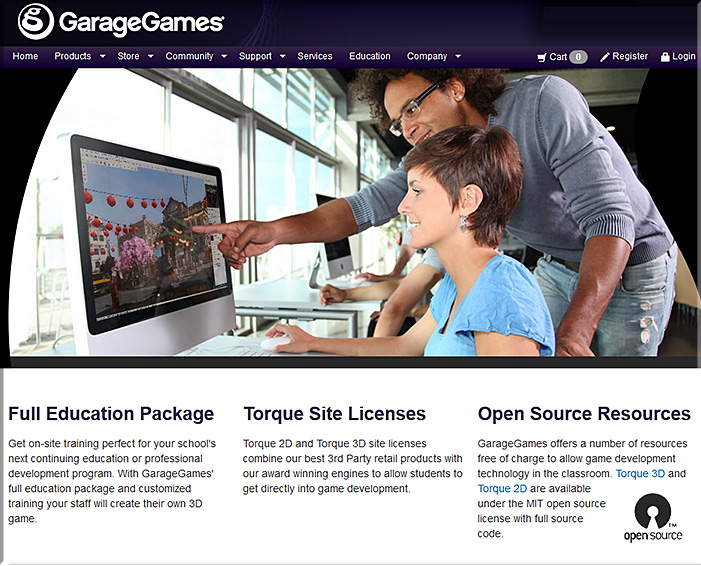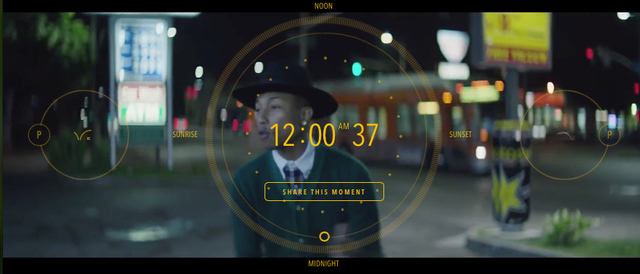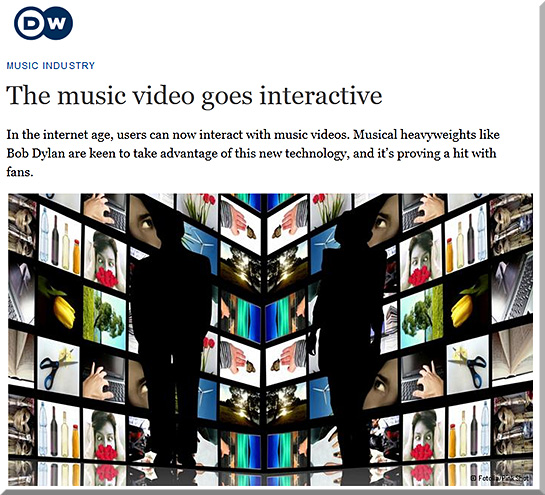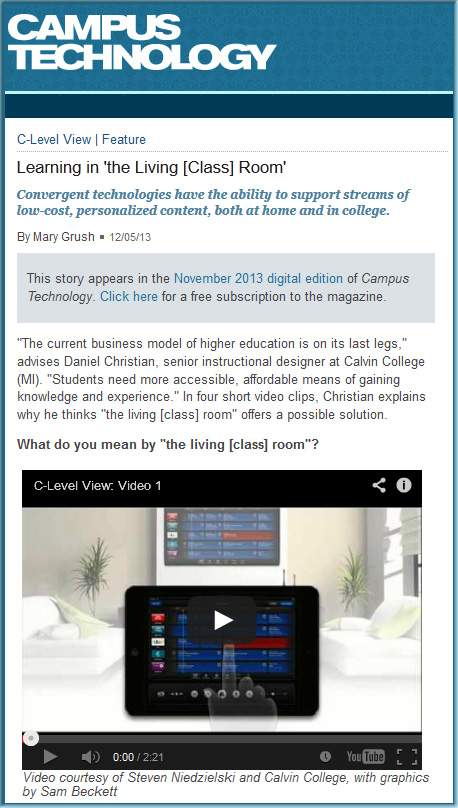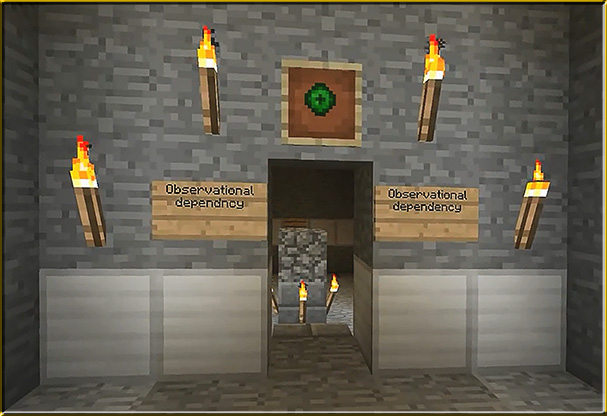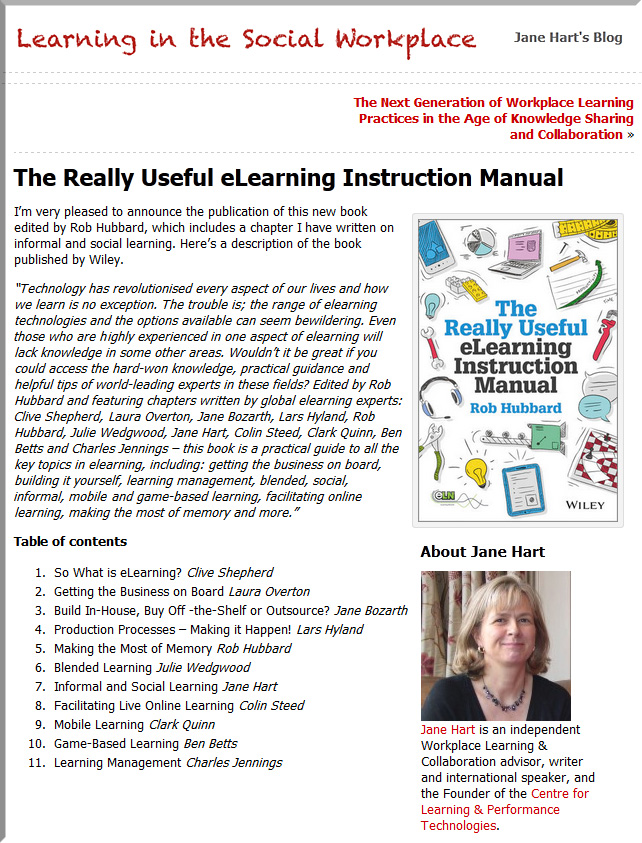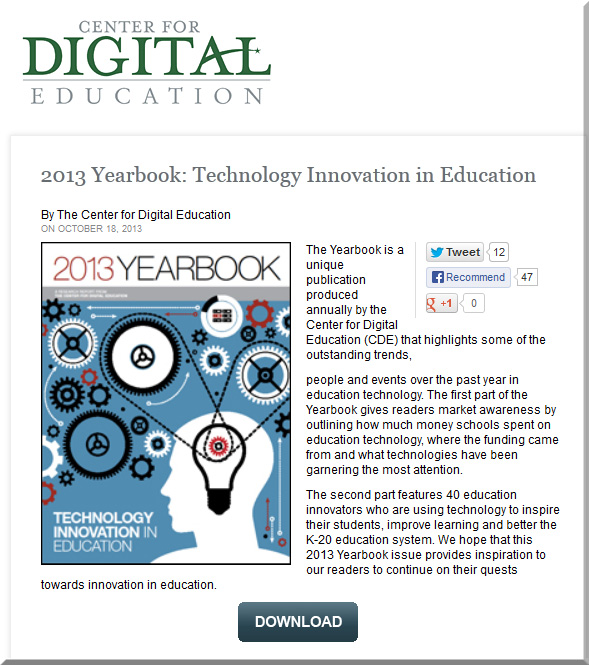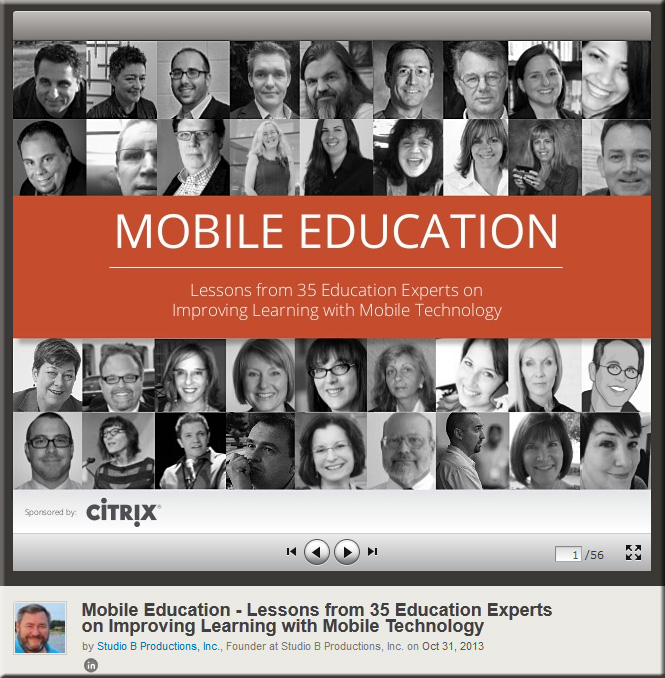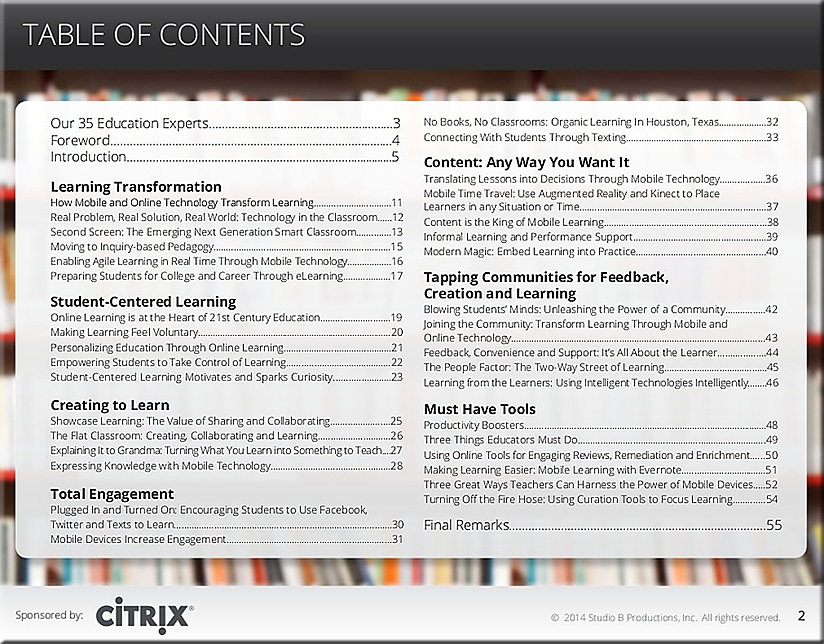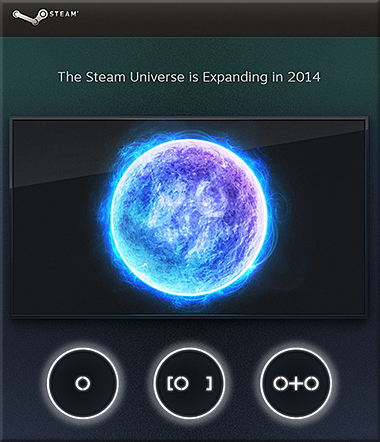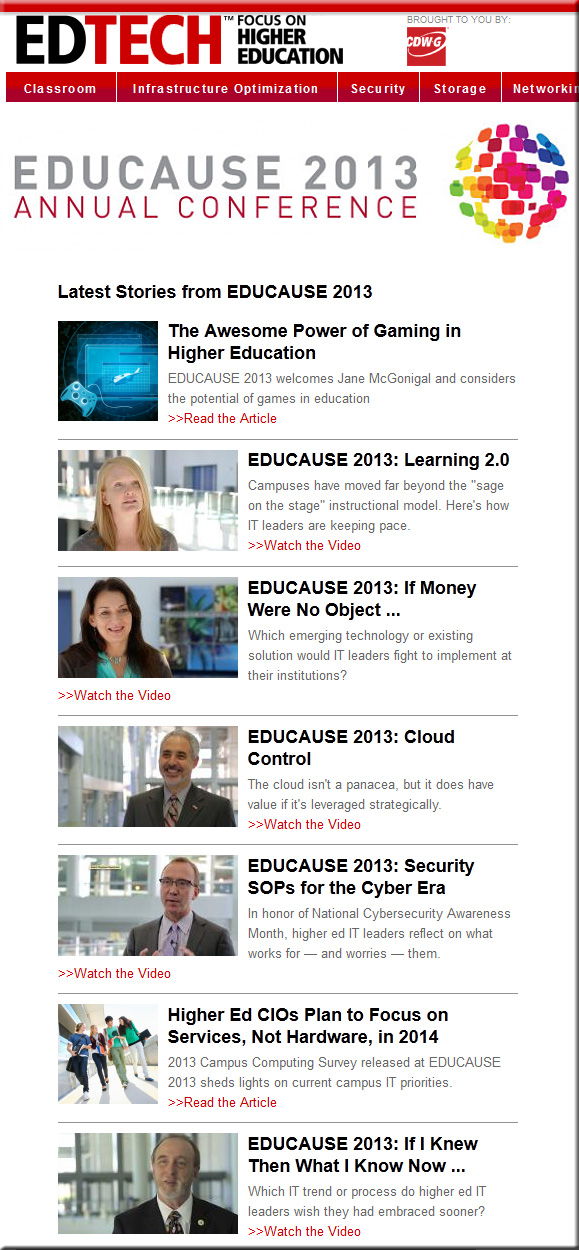10 Serious Games From The ClarkChart — from avatargeneration.com
Excerpt:
The ClarkChart has been hailed as the IMDB of the Educational Simulation and Serious Game Industry. Created by renowned serious games pioneer and award winner author Clark Aldrich, the website is the fastest growing database of educational sims and serious games available on the market.
The purpose of the ClarkChart is to provide a platform where serious game buyers and sellers can connect and possibly collaborate. The games are organized by subject or by developer, making the database easily accessible for all. Here is a list of 10 new and noteworthy serious games as listed in the Clark Chart.
(With thanks to Mr. Michael Haan at Calvin College) also see:
Addendums on 12/19/13:
- Quest based learning: A model for the flipped classroom — from gamesandlearning1.blogspot.com by Steve Isaacs
. - Gaming for education to strengthen schools in 2014 — from opensource.com by Carolyn Fox









